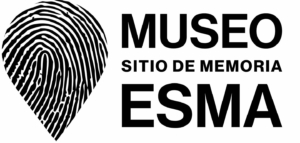As part of the activities related to the application of the ESMA Museum and Site of Memory to the UNESCO World Heritage List, on November 12 and 13, 2020, Alejandra Naftal, Executive Director of the ESMA Museum and Site of Memory, participated in the 4th ICOMOS Brazil Scientific Symposium and the 1st ICOMOS / LAC Scientific Symposium, which took place online. Originally conceived to take place in Rio de Janeiro and reconverted to that format due to the pandemic, the event included several activities, including workshops and round tables that presented heritage management cases from various countries.
Invited together with participants from Brazil, Chile, Mexico and Uruguay, Naftal presented the case of the ESMA Museum and Site of Memory in the workshop “Human Rights and Heritage Management”, which she shared with the President of ICOMOS Argentina Pedro Delheye, and at the round table «Heritage and Human Rights” with other speakers. Both instances were coordinated by Adriana Careaga, a member of the ICOMOS International Administrative Board, who highlighted «the process of social consensus Argentina went through, which are crystallized in the ESMA Museum and Site of Memory as a space for reflection.»
Thursday 12 was the day of the workshop, in which both Naftal and Delheye agreed that «defining cultural heritage implies moving into a complex terrain». Delheye said that Argentina has six properties declared by the UNESCO World Heritage Committee in the Cultural Heritage category, in addition to a dozen on the Tentative List. And he added: “I can assure you that the candidacy of the ESMA Museum and Site of Memory is probably the most heartfelt, most participatory, most beloved one, with the greatest prominence and greater support from the community. It is practically the only one with such legitimacy from the community, which makes it a wonderful case».
In turn, Naftal focused her presentation on how to transform a place of horror into a space for transmission, education and recreation, her experience around the construction of political and social consensus, and the intersection of the concepts of Heritage and Human Rights, which are main axes of the Museum’s curatorial project. “The Museum”, she said, “contributes to knowing, experiencing and understanding what happened through forms of representation that enhance reflection, debate and inquiry. The resignification of these places enables new views and voices, and that is why it is important that it becomes a World Heritage Site”.
On Friday 13, the last day of the symposium, the Executive Director shared a panel with Bente Mathisen, architect and member of the ICOMOS Norway Committee, and Mônica Lima, professor at the Federal University of Rio de Janeiro and one of the editors of the dossier that led the Valongo Wharf to become a UNESCO World Heritage Site in 2018. Mathisen listed the four central points of his task group on Heritage and Human Rights: «The fundamental pillars in the cross effort between Heritage and Human Rights are the integration of rules, standards and principles based on the expansion of rights, as well as strategic recommendations and operational guidelines, training and research, and learning-by-doing». For her part, Lima reviewed the Brazilian case and stressed that “When faced with a forgotten, silenced history, it is important to address a history of affirmation and not victimization, one resignification and recognition. That was the path of the Valongo Wharf and that’s how we achieved the nomination».



